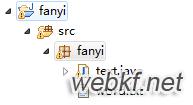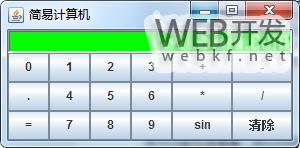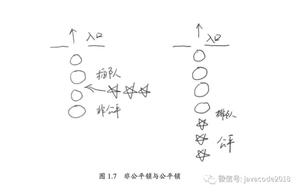Java注解处理器学习之编译时处理的注解详析
1. 一些基本概念
在开始之前,我们需要声明一件重要的事情是:我们不是在讨论在运行时通过反射机制运行处理的注解,而是在讨论在编译时处理的注解。
编译时注解跟运行时注解到底区别在什么地方?其实说大也不大,主要是考虑到性能上面的问题。运行时注解主要是完全依赖于反射,反射的效率比原生的慢,所以在内存比较少,CPU比较烂的机器上会有一些卡顿现象出现。而编译时注解完全不会有这个问题,因为它在我们编译过程(java->class)中,通过一些注解标示,去动态生成一些类或者文件,所以跟我们的APK运行完全没有任何关系,自然就不存在性能上的问题。所以一般比较著名的开源项目如果采用注解功能,通常采用编译时注解
注解处理器是 javac 自带的一个工具,用来在编译时期扫描处理注解信息。你可以为某些注解注册自己的注解处理器。这里,我假设你已经了解什么是注解及如何自定义注解。如果你还未了解注解的话,可以查看官方文档。注解处理器在 Java 5 的时候就已经存在了,但直到 Java 6 (发布于2006看十二月)的时候才有可用的API。过了一段时间java的使用者们才意识到注解处理器的强大。所以最近几年它才开始流行。
一个特定注解的处理器以 java 源代码(或者已编译的字节码)作为输入,然后生成一些文件(通常是.java文件)作为输出。那意味着什么呢?你可以生成 java 代码!这些 java 代码在生成的.java文件中。因此你不能改变已经存在的java类,例如添加一个方法。这些生成的 java 文件跟其他手动编写的 java 源代码一样,将会被 javac 编译。
Annotation processing是在编译阶段执行的,它的原理就是读入Java源代码,解析注解,然后生成新的Java代码。新生成的Java代码最后被编译成Java字节码,注解解析器(Annotation Processor)不能改变读入的Java 类,比如不能加入或删除Java方法。
2. AbstractProcessor
让我们来看一下处理器的 API。所有的处理器都继承了AbstractProcessor,如下所示:
package com.example;
import java.util.LinkedHashSet;
import java.util.Set;
import javax.annotation.processing.AbstractProcessor;
import javax.annotation.processing.ProcessingEnvironment;
import javax.annotation.processing.RoundEnvironment;
import javax.annotation.processing.SupportedAnnotationTypes;
import javax.annotation.processing.SupportedSourceVersion;
import javax.lang.model.SourceVersion;
import javax.lang.model.element.TypeElement;
public class MyProcessor extends AbstractProcessor {
@Override
public boolean process(Set<? extends TypeElement> annoations,
RoundEnvironment env) {
return false;
}
@Override
public Set<String> getSupportedAnnotationTypes() {
Set<String> annotataions = new LinkedHashSet<String>();
annotataions.add("com.example.MyAnnotation");
return annotataions;
}
@Override
public SourceVersion getSupportedSourceVersion() {
return SourceVersion.latestSupported();
}
@Override
public synchronized void init(ProcessingEnvironment processingEnv) {
super.init(processingEnv);
}
}
init(ProcessingEnvironment processingEnv) :所有的注解处理器类都必须有一个无参构造函数。然而,有一个特殊的方法init(),它会被注解处理工具调用,以ProcessingEnvironment作为参数。ProcessingEnvironment 提供了一些实用的工具类Elements, Types和Filer。我们在后面将会使用到它们。
process(Set<? extends TypeElement> annoations, RoundEnvironment env) :这类似于每个处理器的main()方法。你可以在这个方法里面编码实现扫描,处理注解,生成 java 文件。使用RoundEnvironment 参数,你可以查询被特定注解标注的元素(原文:you can query for elements annotated with a certain annotation )。后面我们将会看到详细内容。
getSupportedAnnotationTypes():在这个方法里面你必须指定哪些注解应该被注解处理器注册。注意,它的返回值是一个String集合,包含了你的注解处理器想要处理的注解类型的全称。换句话说,你在这里定义你的注解处理器要处理哪些注解。
getSupportedSourceVersion() : 用来指定你使用的 java 版本。通常你应该返回SourceVersion.latestSupported() 。不过,如果你有足够的理由坚持用 java 6 的话,你也可以返回SourceVersion.RELEASE_6。我建议使用SourceVersion.latestSupported() 。在 Java 7 中,你也可以使用注解的方式来替代重写getSupportedAnnotationTypes() 和 getSupportedSourceVersion() ,如下所示:
@SupportedSourceVersion(value=SourceVersion.RELEASE_7)
@SupportedAnnotationTypes({
// Set of full qullified annotation type names
"com.example.MyAnnotation",
"com.example.AnotherAnnotation"
})
public class MyProcessor extends AbstractProcessor {
@Override
public boolean process(Set<? extends TypeElement> annoations,
RoundEnvironment env) {
return false;
}
@Override
public synchronized void init(ProcessingEnvironment processingEnv) {
super.init(processingEnv);
}
}
由于兼容性问题,特别是对于 android ,我建议重写getSupportedAnnotationTypes() 和 getSupportedSourceVersion() ,而不是使用 @SupportedAnnotationTypes 和 @SupportedSourceVersion。
接下来你必须知道的事情是:注解处理器运行在它自己的 JVM 中。是的,你没看错。javac 启动了一个完整的 java 虚拟机来运行注解处理器。这意味着什么?你可以使用任何你在普通 java 程序中使用的东西。使用 guava! 你可以使用依赖注入工具,比如dagger或者任何其他你想使用的类库。但不要忘记,即使只是一个小小的处理器,你也应该注意使用高效的算法及设计模式,就像你在开发其他 java 程序中所做的一样。
3. 注册你的处理器
你可能会问 “怎样注册我的注解处理器到 javac ?”。你必须提供一个.jar文件。就像其他 .jar 文件一样,你将你已经编译好的注解处理器打包到此文件中。并且,在你的 .jar 文件中,你必须打包一个特殊的文件javax.annotation.processing.Processor到META-INF/services目录下。因此你的 .jar 文件目录结构看起来就你这样:
MyProcess.jar
-com
-example
-MyProcess.class
-META-INF
-services
-javax.annotation.processing.Processor
javax.annotation.processing.Processor 文件的内容是一个列表,每一行是一个注解处理器的全称。例如:
com.example.MyProcess
com.example.AnotherProcess
4. 例子:工厂模式
我们要解决的问题是:我们要实现一个 pizza 店,这个 pizza 店提供给顾客两种 pizza (Margherita 和 Calzone),还有甜点 Tiramisu(提拉米苏)。
public interface Meal {
public float getPrice();
}
public class MargheritaPizza implements Meal{
@Override
public float getPrice() {
return 6.0f;
}
}
public class CalzonePizza implements Meal{
@Override
public float getPrice() {
return 8.5f;
}
}
public class Tiramisu implements Meal{
@Override
public float getPrice() {
return 4.5f;
}
}
public class PizzaStore {
public Meal order(String mealName) {
if (null == mealName) {
throw new IllegalArgumentException("name of meal is null!");
}
if ("Margherita".equals(mealName)) {
return new MargheritaPizza();
}
if ("Calzone".equals(mealName)) {
return new CalzonePizza();
}
if ("Tiramisu".equals(mealName)) {
return new Tiramisu();
}
throw new IllegalArgumentException("Unknown meal '" + mealName + "'");
}
private static String readConsole() {
Scanner scanner = new Scanner(System.in);
String meal = scanner.nextLine();
scanner.close();
return meal;
}
public static void main(String[] args) {
System.out.println("welcome to pizza store");
PizzaStore pizzaStore = new PizzaStore();
Meal meal = pizzaStore.order(readConsole());
System.out.println("Bill:$" + meal.getPrice());
}
}
正如你所见,在order()方法中,我们有许多 if 条件判断语句。并且,如果我们添加一种新的 pizza 的话,我们就得添加一个新的 if 条件判断。但是等一下,使用注解处理器和工厂模式,我们可以让一个注解处理器生成这些 if 语句。如此一来,我们想要的代码就像这样子:
public class PizzaStore {
private MealFactory factory = new MealFactory();
public Meal order(String mealName) {
return factory.create(mealName);
}
private static String readConsole() {
Scanner scanner = new Scanner(System.in);
String meal = scanner.nextLine();
scanner.close();
return meal;
}
public static void main(String[] args) {
System.out.println("welcome to pizza store");
PizzaStore pizzaStore = new PizzaStore();
Meal meal = pizzaStore.order(readConsole());
System.out.println("Bill:$" + meal.getPrice());
}
}
public class MealFactory {
public Meal create(String id) {
if (id == null) {
throw new IllegalArgumentException("id is null!");
}
if ("Calzone".equals(id)) {
return new CalzonePizza();
}
if ("Tiramisu".equals(id)) {
return new Tiramisu();
}
if ("Margherita".equals(id)) {
return new MargheritaPizza();
}
throw new IllegalArgumentException("Unknown id = " + id);
}
}
5. @Factory Annotation
能猜到么,我们打算使用注解处理器生成MealFactory类。更一般的说,我们想要提供一个注解和一个处理器用来生成工厂类。
让我们看一下@Factory注解:
@Target(ElementType.TYPE)
@Retention(RetentionPolicy.CLASS)
public @interface Factory {
/**
* The name of the factory
*/
Class<?> type();
/**
* The identifier for determining which item should be instantiated
*/
String id();
}
思想是这样的:我们注解那些食物类,使用type()表示这个类属于哪个工厂,使用id()表示这个类的具体类型。让我们将@Factory注解应用到这些类上吧:
@Factory(type=MargheritaPizza.class, id="Margherita")
public class MargheritaPizza implements Meal{
@Override
public float getPrice() {
return 6.0f;
}
}
@Factory(type=CalzonePizza.class, id="Calzone")
public class CalzonePizza implements Meal{
@Override
public float getPrice() {
return 8.5f;
}
}
@Factory(type=Tiramisu.class, id="Tiramisu")
public class Tiramisu implements Meal{
@Override
public float getPrice() {
return 4.5f;
}
}
你可能会问,我们是不是可以只将@Factory注解应用到Meal接口上?答案是不行,因为注解是不能被继承的。即在class X上有注解,class Y extends X,那么class Y是不会继承class X上的注解的。在我们编写处理器之前,需要明确几点规则:
- 只有类能够被@Factory注解,因为接口和虚类是不能通过new操作符实例化的。
- 被@Factory注解的类必须提供一个默认的无参构造函数。否则,我们不能实例化一个对象。
- 被@Factory注解的类必须直接继承或者间接继承type指定的类型。(或者实现它,如果type指定的是一个接口)
- 被@Factory注解的类中,具有相同的type类型的话,这些类就会被组织起来生成一个工厂类。工厂类以Factory作为后缀,例如:type=Meal.class将会生成MealFactory类。
- id的值只能是字符串,且在它的type组中必须是唯一的。
注解处理器:
public class FactoryProcessor extends AbstractProcessor {
private Types typeUtils;
private Elements elementUtils;
private Filer filer;
private Messager messager;
private Map<String, FactoryGroupedClasses> factoryClasses =
new LinkedHashMap<String, FactoryGroupedClasses>();
@Override
public synchronized void init(ProcessingEnvironment processingEnv) {
super.init(processingEnv);
typeUtils = processingEnv.getTypeUtils();
elementUtils = processingEnv.getElementUtils();
filer = processingEnv.getFiler();
messager = processingEnv.getMessager();
}
@Override
public boolean process(Set<? extends TypeElement> arg0,
RoundEnvironment arg1) {
...
return false;
}
@Override
public Set<String> getSupportedAnnotationTypes() {
Set<String> annotataions = new LinkedHashSet<String>();
annotataions.add(Factory.class.getCanonicalName());
return annotataions;
}
@Override
public SourceVersion getSupportedSourceVersion() {
return SourceVersion.latestSupported();
}
}
在getSupportedAnnotationTypes()方法中,我们指定@Factory注解将被这个处理器处理。
总结
以上是 Java注解处理器学习之编译时处理的注解详析 的全部内容, 来源链接: utcz.com/z/336704.html









